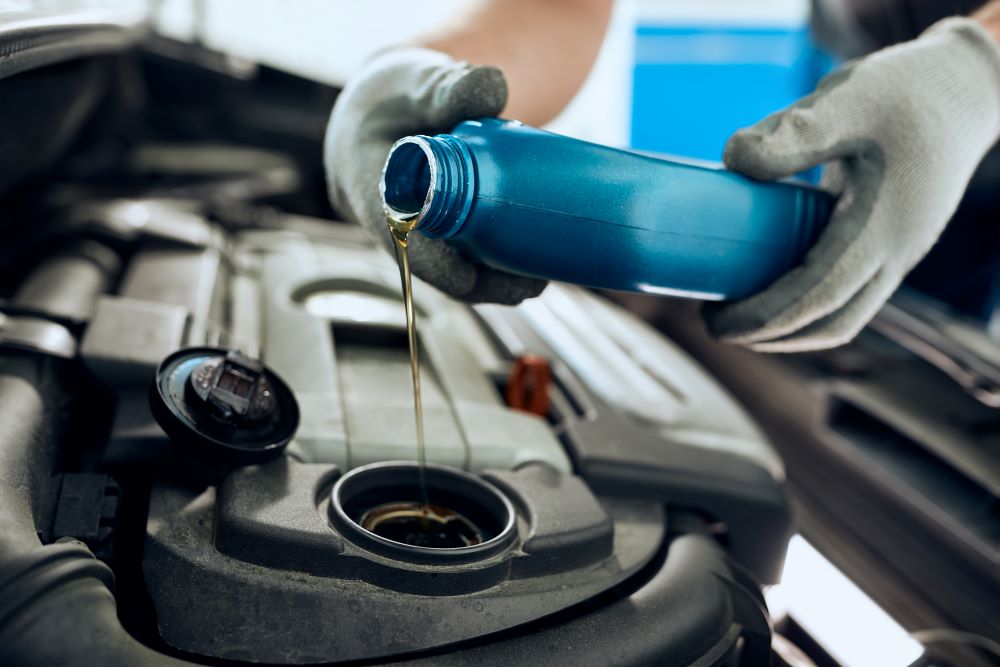9000+ Cashless Garages
96% Claims Settled (FY 24-25)

9000+ Cashless Garages
96% Claims Settled (FY 24-25)



Besides lubricating the engine components, engine oil is one of the most critical factors in engine performance and lifespan. In terms of vehicular upkeep, the most important is maintaining the quality of the engine oil.
In this article, we will explore the importance of engine oil and provide practical steps on how to check engine oil quality effectively. Based on knowledge of the basic properties of quality oil and how to diagnose the most frequent defects, you can ensure a smooth engine operation.


Engine oil is essential for the efficient operation of a vehicle, not only as a component but also as a means to ensure the car's optimal performance. Here's a breakdown of the key points of the importance of engine oil:
Lubrication: Engine oil reduces friction between moving parts, thus minimising wear and tear and extending engine life. Without lubrication, the health and life of a car may be at risk.
Temperature Regulation: The engine cools itself during normal driving, but it may overheat when boat-towed or under high-stress driving conditions. Hence, engine oil is required for temperature regulation.
Rust & Corrosion Protection: Modern engine oils have additives that create protective layers over metal parts and act effectively. The use of these will eliminate rust and protect the engine.
Fuel Economy: Clean engine oil helps improve fuel economy by reducing friction losses, resulting in better mileage and fewer trips to the pump. This is time-saving and eco-friendly.
Engine oil is crucial to your vehicle's performance, longevity, and fuel efficiency. If the quality of engine oil is ignored, it can lead to catastrophic damage, expensive repairs, and dangerous driving situations. Here are some of the primary issues that come with poor engine oil quality:
The engine oil levels are an essential indicator of your car's health. Being up-to-date with the oil levels is, therefore, extremely crucial. Here are the steps to check the engine oil levels:
Park on Level Ground
To ensure an accurate measurement of your engine oil level, park the vehicle on a flat, even surface. This ensures an even distribution of the oil inside the pan, preventing it from being misread.
Turn Off the Engine
Now, cool the engine and put it in for 5-10 minutes. Taking the oil into the pan is essential to achieve the precise height. The height of the oil is read differently immediately after the ride because it has been circulated.
Use the Dipstick
The dipstick will be stationed near the engine. This would have a tube running down into the oil pan. It has a brightly coloured handle. Dip it into the oil tank for some time.
Clean the Dipstick
Now, remove the dipstick. Before reinserting it, wipe the surface clean with a cloth or paper towel. Pull out again and check where the accumulated oil meets the markings on the dipstick.
Check the Oil Quality
When checking the oil level, inspect the oil's condition as well. The new engine oil will be a transparent amber, free from dirt and other contaminants.
Repeat Occasionally
Make it a point to check levels for engine oil - it is best practice for ensuring that your engine is functioning optimally. Check oil levels at least monthly, or make it a habit before trips that will likely involve longer mileage.
Maintaining optimal engine oil levels is essential for the health and performance of your vehicle. Here's a breakdown of how to effectively manage your engine oil and ensure your car runs smoothly:
Check Oil Levels Regularly: Oil levels should be checked at least once a month, or as specified in the vehicle owner's manual, at regular intervals. Frequent checks will uncover variations early enough to prevent any serious engine trouble from starting.
Always Use the Specified Type of Replacement Oil: If the oil level drops below the recommended level, it should be topped up with the oil specified by the manufacturer. This ensures the optimal oil level is met.
Check Your Car for Leak Signs: Several signs of oil leakage, such as a wet spot under the car or a wet engine, should be consistently monitored. On detection, immediate action is needed. Such leakages may pose serious concerns.
Do Not Combine Oils: Filling your engine with oils from different sources does not add value or increase efficiency unless specified by the manufacturer. Negative reactions to oils can lead to an overall failure of even the best oils.
Change Oil Filters During Routine Oil Changes: An unclean oil filter can prevent effective filtration of your engine oil. A new filter will trap unwanted debris and other sediments that have accumulated over time. Hence, it must be cleaned.
Choosing the correct engine oil to optimise your car's performance is crucial. Engine oil quality can significantly impact how efficiently the engine operates and its longevity. The chart below lists the various types of engine oils and their performance in a range of situations:
Things to Consider:
Viscosity: This term is used to determine the thickness of the oil. Thinner oil flows easily, whereas thicker oil gives added protection.
Additives: These are additional chemicals added to the oil to aid in cleaning the engine, reduce wear, and prevent oil breakdown.
Synthetic vs Regular Oil: Synthetic oil is produced in a laboratory and can withstand extremely high temperatures with equal or improved performance over regular oil. However, synthetic oil carries a higher price tag.
Here's a quick guide to understanding the common engine oil issues and how to tackle them effectively:
Proper maintenance increases the durability of an engine. Here are the tips on how you can ensure that your engine oil stays in good condition:
In conclusion, proper engine oil maintenance is crucial for maintaining your vehicle's optimal performance and longevity. Following the manufacturer's recommendations and taking proactive steps in oil care, you can ensure your engine remains in peak condition for many years.
By applying the prescribed oil, filling it properly, and making regular changes, you can avoid engine degradation, improve its efficiency, and prevent expensive repair or replacement.